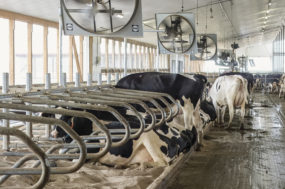In 2018, the New York Times started off an article with one line: “Can rural America be saved?”
For the first time ever, the population of rural America shrank in the last census. With the loss of family farms and manufacturing jobs, there is little economic opportunity for those who live there. Although rural communities prospered in the economic recovery between 1992 and 1996, they never came back from the 2008 recession, during which counties with less than 100,000 residents lost 17,500 businesses in the next four years. In addition to the lack of employment, the countryside has also recently experienced problems with opioid addictions and spikes in crime. Tax incentives to lure more companies to small towns have not worked, nor are American workers ever likely to produce goods cheaper than China or better than robotic machines. Tech industries are hesitant to move operations to locations where there is not already a body of skilled workers and therefore find it more productive to remain in cities. Harrowingly, the answer the article gave in response to the future of rural America was: No, it could not be saved.
America faced a similar crisis a century ago. In the early 1900s, as more people fled to the cities, rural America began to experience economic and social problems not faced before. These issues became a national concern, fueled by stories in newspapers and journal articles. The Country Life Movement was born out of the notion that the deterioration of rural communities was a concern for all of America. However, while the goal of improving economic and living conditions in the countryside seemed noble, its motivations were more complex and not entirely innocent.
The Country Life Movement did not originate in rural areas, which by 1920 still made up half of the country. Instead, it was fostered by the urban middle class holding such professions as academics, businessmen, journalists and ministers, and who largely fell into three factions. The first group, the so-called “urban agrarians,” wanted to preserve what they saw as the moralist integrity of the countryside. Believing the city to be a corrupter of values, they wanted to prevent the exodus of farmers to the city in order for them to remain in agriculture and be an example of virtue for the rest of the nation.
A second group within the Country Life Movement, typically teamed with social scientists, sought to introduce more progressive social ideas into rural communities to stop what they considered the “degeneration” of people there. In particular, they sought to reform schools and churches, seeking to modernize both institutions. Their intentions, however, were mostly self-serving. These advocates of the movement feared that mentally and socially “backward” farmers could not produce enough food to feed the cities. They wanted to safeguard the productivity of American farms in order to ensure the cities would not starve.
Finally, a third division was less concerned with values or institutional progress, but instead wanted farmers to pursue technological advancement. They encouraged farmers to take a more scientific approach to agriculture in order to produce more goods. They sought to encourage industrialized agriculture as a means to ensure cheap food for the rest of the nation, sharing similar motivations with the second group.
Most of the ambitions of the Country Life Movement never came to fruition. The three factions never fully integrated their goals, and it was largely met with resistance from the rural population itself. They saw the Country Lifers as condescending and out-of-touch, as well as driven by self-serving incentives. Some farmers resented being forced to produce more for the sake of the urban population, and others didn’t want to be told to modernize, an act for which many had little appetite. Perhaps the group that found the most success was that which wanted farmers to become more businesslike. The agricultural extension service was created out of the Country Life Movement and is its biggest remaining legacy. Those particular Country Lifers eventually morphed into the American Farm Bureau Federation, which served the interests of the bigger, wealthier farmers in the 20th century. In total, rural communities did not significantly benefit from the Country Life Movement. Instead, they had to wait until World War II to experience more prosperity, being needed in the manufacturing effort. The war also brought about incidental social and technological progress in the countryside, as well as for the rest of the nation.
The poverty in rural America is not surprising, but it is still startling. While rural communities also struggle in other modern nations, it is nowhere as near pronounced and drastic as in the U.S. Having now lived in three other countries, it is vexing to come back home and see the boarded buildings and crumbling homes in the nearest town, and to learn that almost all of the businesses have left. One hundred years later, rural America is in crisis again, and it looks like no one has the answers. Perhaps even worse, there’s a growing consensus that it can’t be helped. Nevertheless, the idea of America was built on the rural and agricultural community. There are still 46 million people living in these communities. We owe them more than what they have now.




